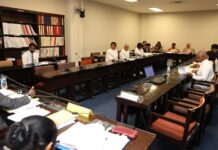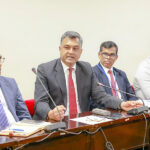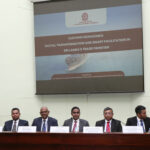The Central Bank (CB) will review vigorously the performance of the open economy policies introduced from 1977 while working within a framework of market economy, the bank stated in its Roadmap for 2021 released last week.
“We will evaluate the performance of the open economy policies, so that the country and its economic agents could follow a focused approach to becoming an industrial economy,” said Central Bank Governor, Prof. W. D. Lakshman.
A policy framework with such long-term objectives would generate greater macroeconomic benefits than being driven by short-term vicissitudes in the market and unbridled desire for short-term financial gains, the bank noted. Sri Lanka abandoned statist economics and its import substitution industrialization policy for market-oriented policies and export oriented trade in 1977.
Since then the country has shifted away from socialist orientation, the Central Bank notes that the Government has provided policy support to improve domestic production, particularly in agriculture and industry sectors in line with the policy framework outlined in the ‘Vistas of Prosperity and Splendour’ and the Budget 2021.
“The Government has provided policy support to improve domestic production, particularly in Agriculture and Industry sectors,” the Governor said.
The Central Bank stated that the fiscal stimuli and incentives would help expand the domestic capital base, improving domestic supplies. These developments would reduce the import dependence of the country, enhancing domestic production ratios in agricultural and industrial supplies.
Domestic supply improvements would enhance Sri Lanka’s external competitiveness and export potential, while also reducing seasonal volatilities in domestic inflation to a great extent.
The features of the new macroeconomic policy framework will be incorporated into economic management decisions of the Central Bank more closely, to ensure a coordinated approach to pushing the country on to a rapid growth path and sustained prosperity.
“We are traversing through challenging times. It is important to closely monitor domestic as well as global monetary and macroeconomic developments to be able to effectively deal with renewed and impending challenges,” the Governor said.
In this regard, the Central Bank will make use of conventional and unconventional data sources to conduct regular analysis to assist in monetary policy decision making.
“In addition to the use of conventional data sources and methods such as inflation expectations surveys and business outlook surveys, we will continue to use high frequency data from alternative repositories and adopt novel techniques including machine learning and other data science techniques to enhance our understanding of new developments,” said the Governor.
“We will continue to use medium-term forecasts from the semi-structural macroeconomic model under the Forecasting and Policy Analysis System (FPAS) and provide information on the outlook of key macroeconomic variables, including inflation and economic growth, to provide guidance to key stakeholders,” the Governor also said.
As part of this process, the Central Bank plans to publish a comprehensive Monetary Policy Report (MPR) in the second half of this year.












